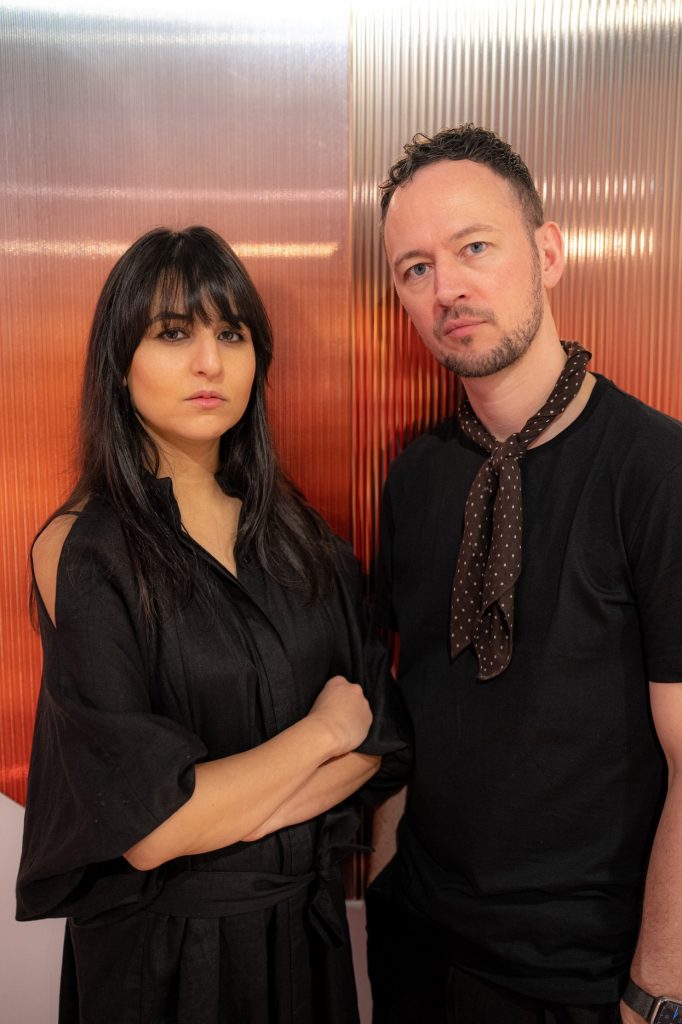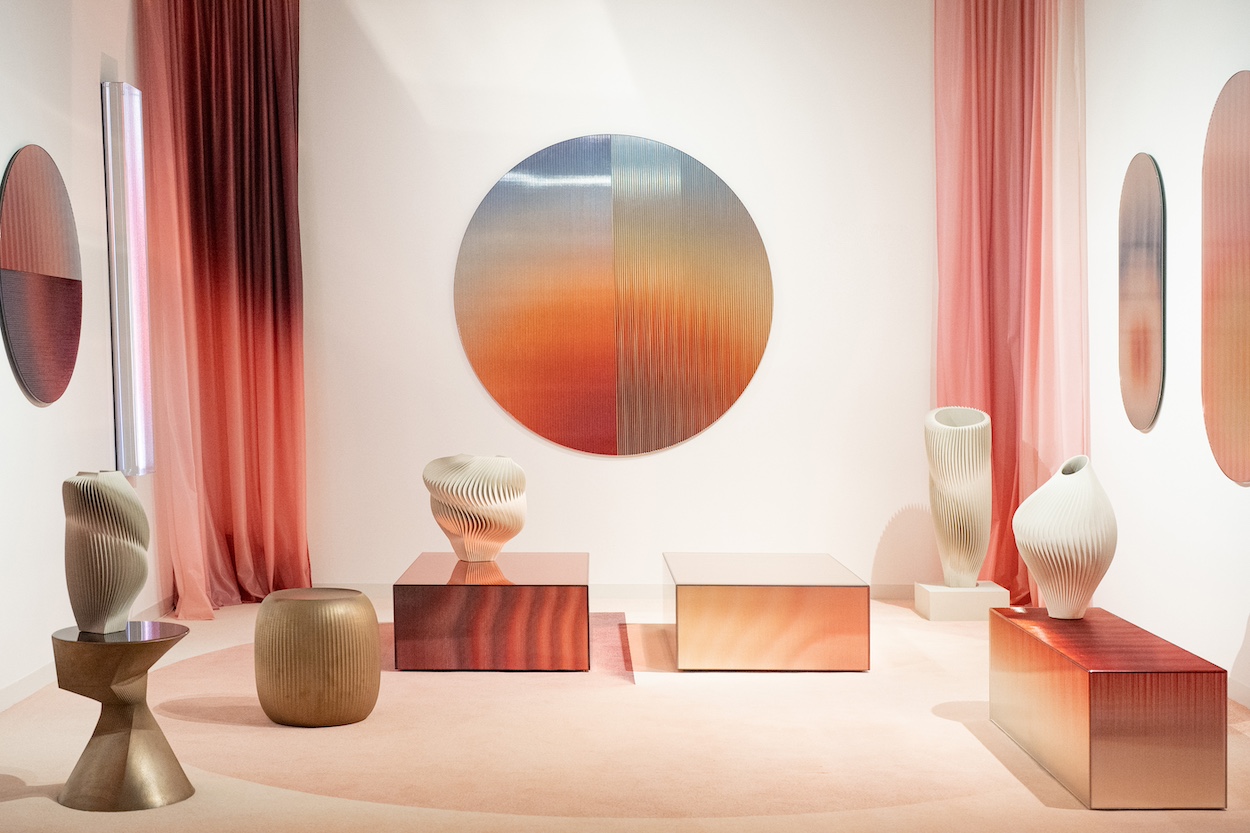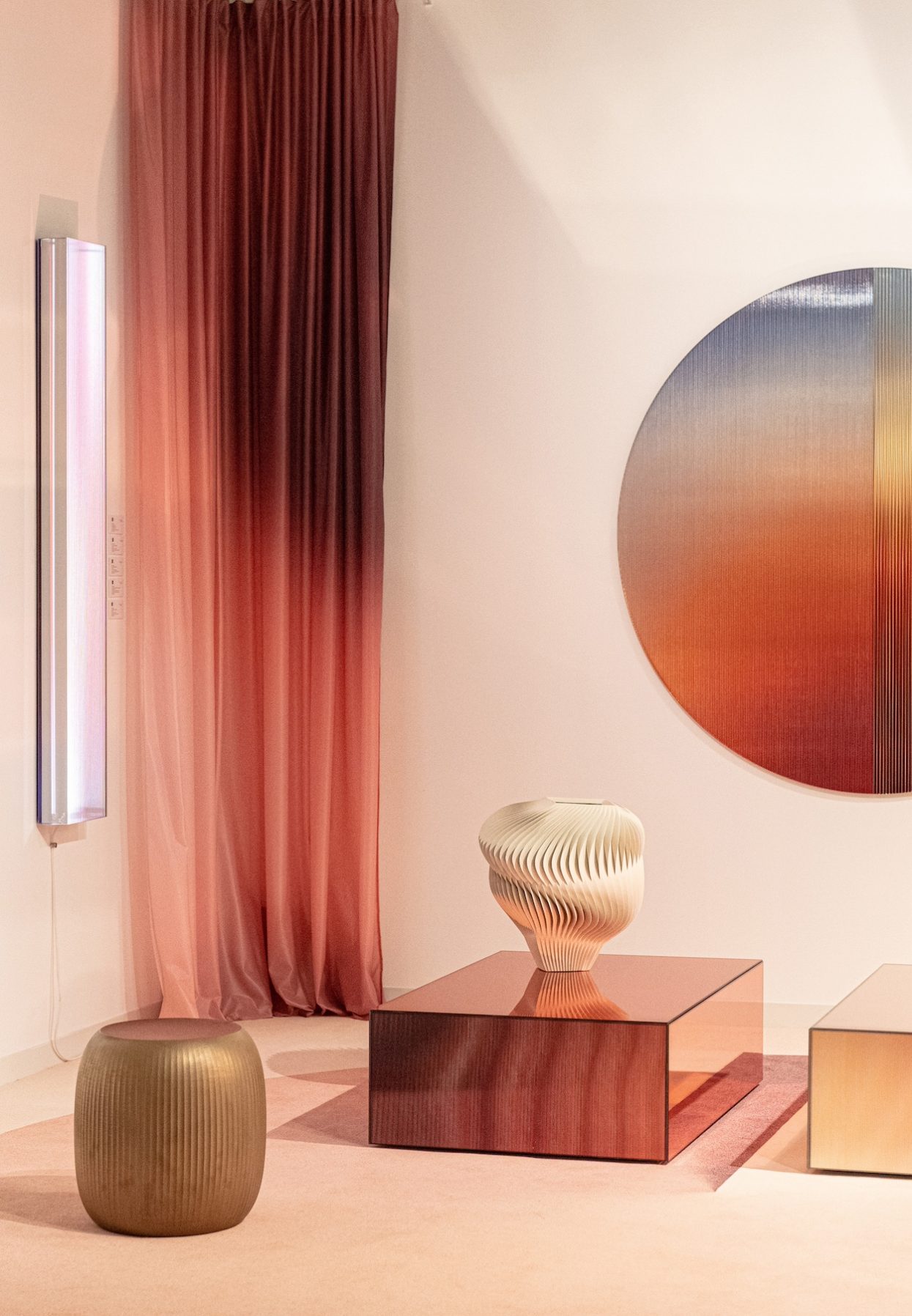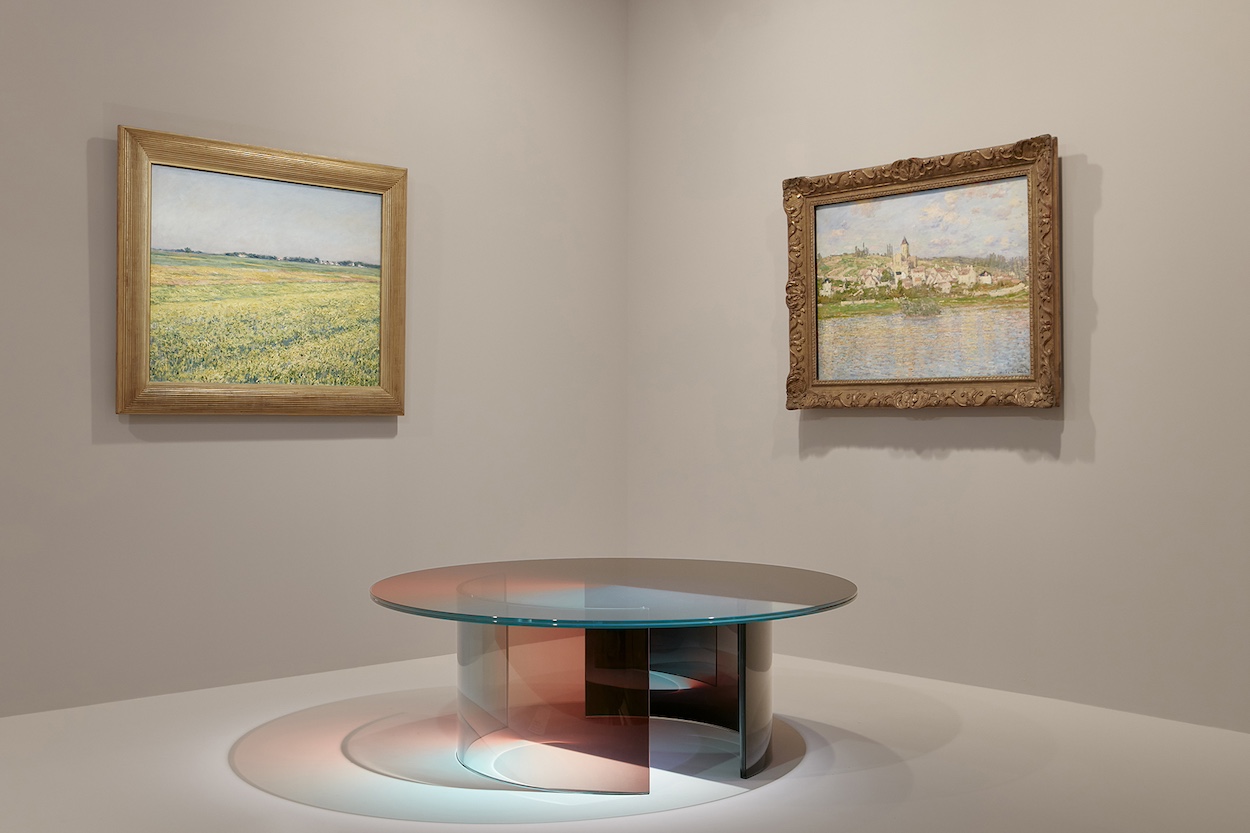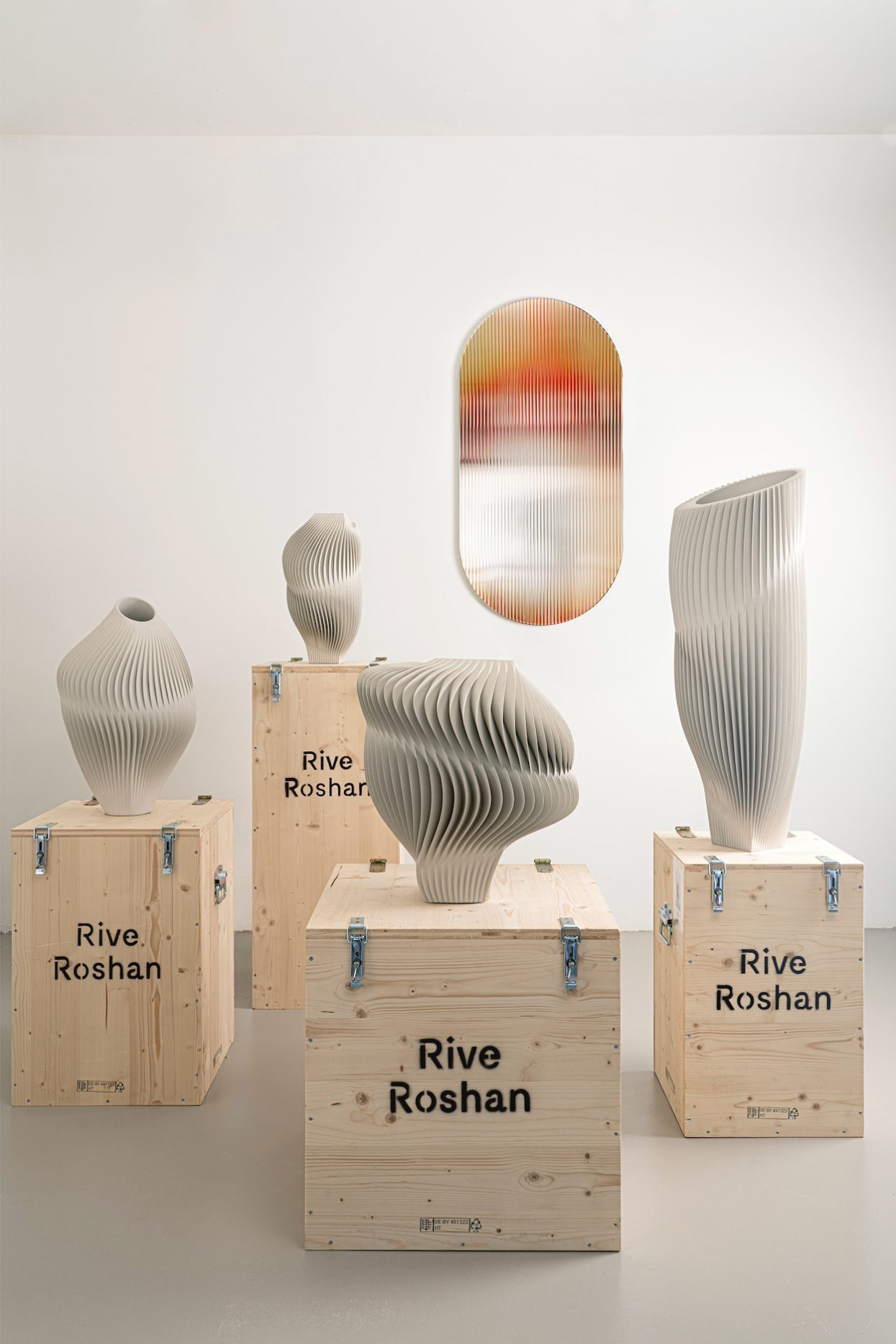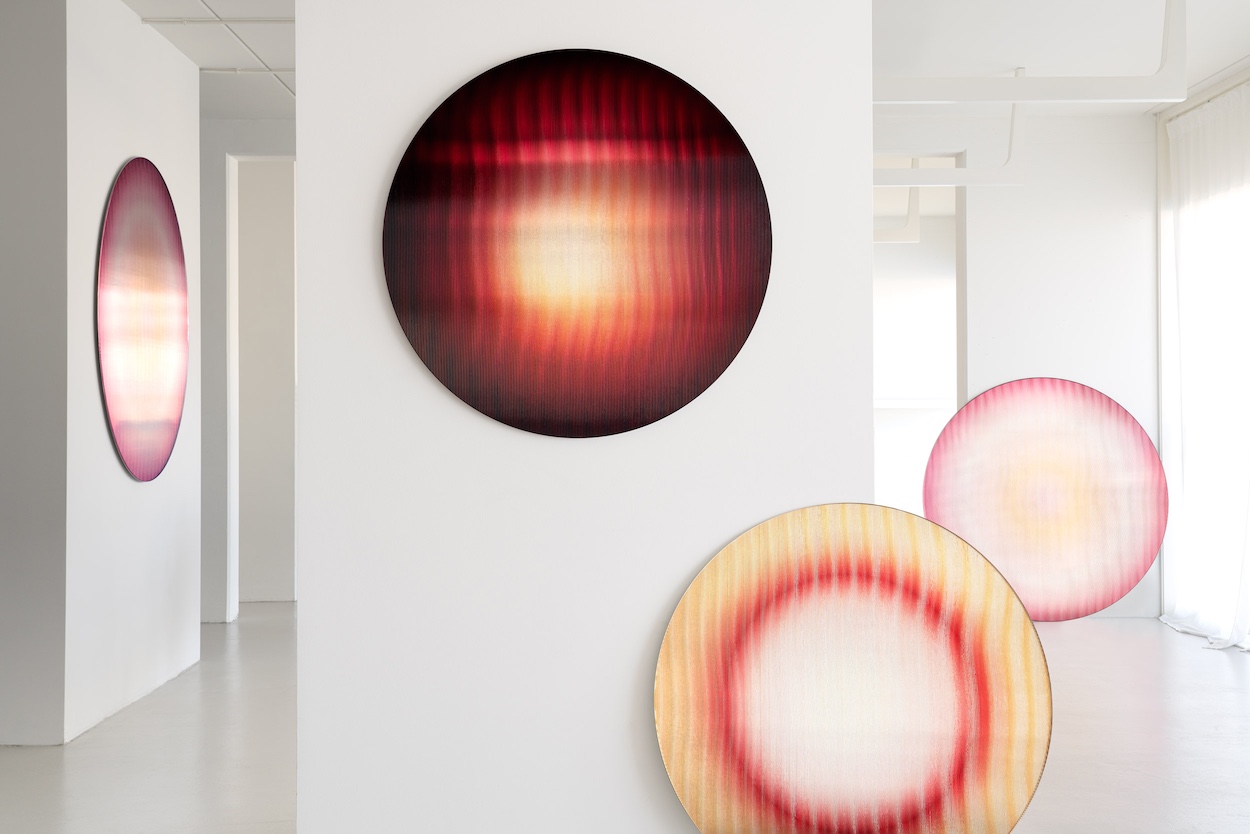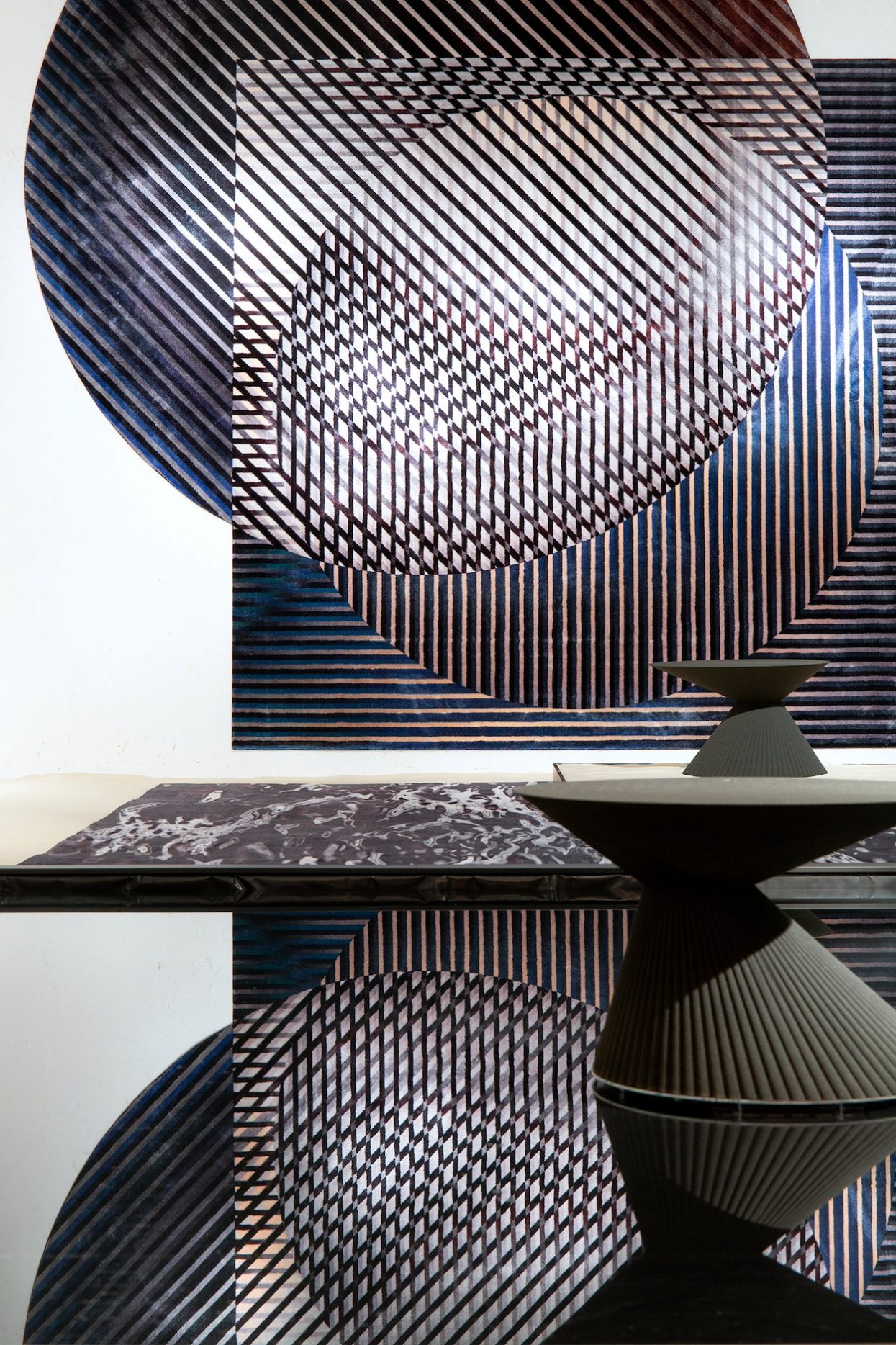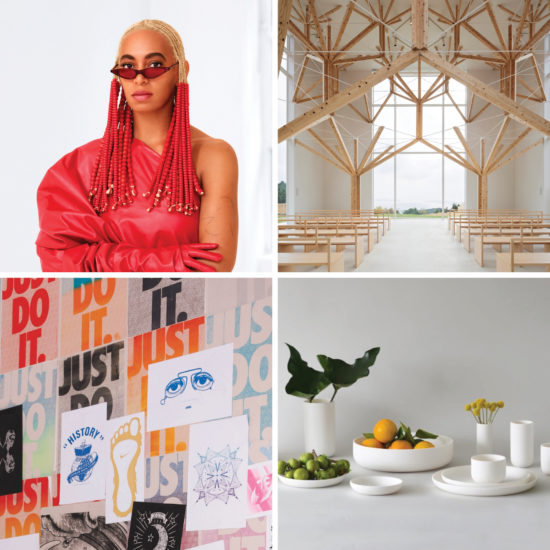Here, we ask designers to take a selfie and give us an inside look at their life.
Age: 42 (Ruben). 37 (Golnar).
Occupation: Artists/designers.
Instagram: @riveroshan
Hometown: Amsterdam (Ruben). Sydney (Golnar).
Studio location: Amsterdam.
Describe what you make: We create objects and installations on the cusp of art and design (Ruben). We try to capture transience, by using light, space, and material to shift people’s perspectives (Golnar).
The most important thing you’ve designed to date: Having our Colour Dial table exhibited alongside a Monet painting at the National Gallery of Victoria in Melbourne was an interesting highlight, but it’s impossible to single out one most important thing. It’s perhaps the thread that runs through all our work, and that we discover ourselves as we are expanding our body of work (Ruben). Our recent solo Curio booth at Design Miami, presented by Rademakers Gallery. We presented a poetic sanctuary called The Space in Between (Golnar).
Describe the problem your work solves: Liberated from the corset of functionality, our work aims to sooth, stimulate, and enrich people’s inner world (Ruben). We try to create installations and objects that make people reflect, in the hope for meaningful human connection (Golnar).
Describe the project you are working on now: A large architectural commission in Amsterdam, working closely with the architect from the concept phase, to insert visual wonder into an urban facade (Ruben).
A new or forthcoming project we should know about: Preparing for our first solo exhibition in the Southern Hemisphere, with Gallery Sally Dan Cuthbert in Sydney. It opens Feb. 1 (Golnar).
What you absolutely must have in your studio: Definitely music—we can’t work without good music filling the space (Ruben). Our two studio spaces have been right on the waterside. We love the calming effect of staring into the ripples (Golnar).
What you do when you’re not working: With two young daughters, almost all our time outside of work goes to them at the moment. We love to travel with them and try to combine work moments abroad with spending time with them, walking through nature, eating good food, seeing art, and drawing together (Ruben).
Sources of creative envy: I’m not sure envy is the right word, but we often feel Lee Ufan executes on similar thoughts with so much finesse and depth (Ruben). Since my youngest years, I’ve been very inspired by Shirin Neshat, an Iranian artist and filmmaker that challenges the role of women in Iranian society. As I’m of Persian origin, her work has always had a big impact on me (Golnar).
The distraction you want to eliminate: Functionality can be a big distraction. When you’re trained as a designer, the essence of what you learn is to serve the needs of users. But serving people’s basic needs—or chasing solutions to small, irrelevant problems to gain a commercial edge—isn’t really serving those people on a deeper level. Once you accept the most important aspect of a bench isn’t that you can sit on it, your attention shifts to what’s left: materiality, proportion, expression, how it makes you feel. That can be much more interesting than resting your body (Ruben). Worries for the world (Golnar).
Concrete or marble? Both, they’re not comparable (Golnar).
High-rise or townhouse? Townhouse to live in, but high-rise to create livable future cities (Ruben).
Remember or forget? Remember scents, moods, colors. Forget appointments, dates, and names (Ruben).
Aliens or ghosts? Ghosts.
Dark or light? Light.
